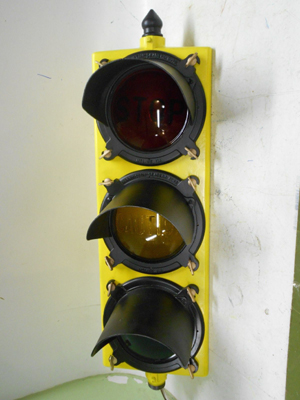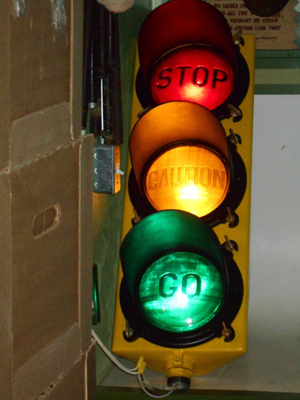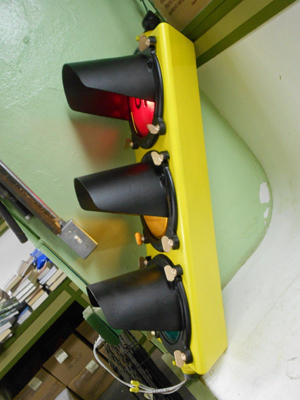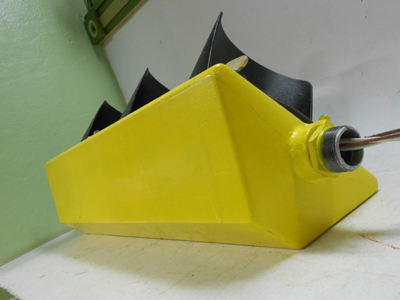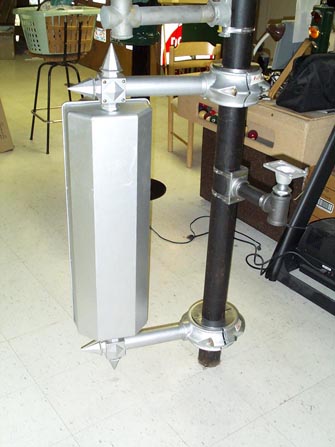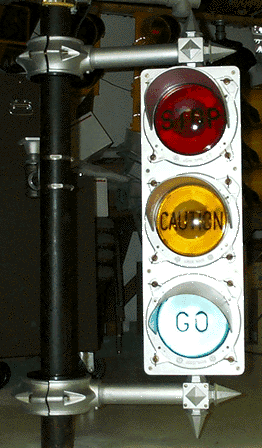Solid Body Signals
In the very early days of traffic signals, the bodies of adjustable or single face signals, were made so that they were cast all one piece. If you needed a 3 section length signal (RYG), a casting was made for this length and it would accomadate 3 doors/lenses/reflectors etc. If you only needed a 2 section length signal, a separate casting was made for that length, and also for a 1 section signal, a separate casting was needed. This was not very economical and signals were eventually redesigned to be sectional so that one casting was needed for the body and each body could be stacked to form 2, 3, 4 or even 5 section signals. End plates were used on each end of a stack of sections and rods were passed from one end plate to the other to hold the entire assembly together. After some time, the sectional design was improved upon so that each section was closed off except for a 1 1/2 inch hole to pass wiring through and a set of carriage bolts to hold each section to the next one.
At this time, The Traffic Signal Museum has four solid body single face traffic signals, an Ornamental Eaglelux, a Crouse Hinds type T port hole, a GE Novalux, and what is now known as a single door Milwaukee signal. There were a few manufacturers who made them in the very early days. GE made one, Eagle made the Ornamental Eaglelux, Crouse Hinds had the port hole signals, Tokhiem, Harrington Seaberg and Johnson also made them. There was also the single door signal that was made for the city of Milwaukee. On this page, I will show examples of these as pictures become available.
The Ornamental Eaglelux was one of the most ornate of the solid body signals.
Here is a picture of mine as it was received. It had only one coat of paint, which was worn off in some places. The only thing wrong with it was that one of the hinges on one of the reflector frames was broken. This was easily fixed by making a new hinge and having it welded on in place of the old broken one. Other than that, there was nothing that had to be fixed on this signal.
Below are some pictures of the signal with the mounting
hardware I used to mount it to the basement pole.
The back of this signal is very ornate, which is kind of strange since the front
of the signal is what traffic is supposed to see.
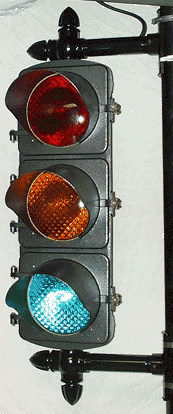
Below is a close up of the back of the
signal on the bottom as well as the reproduction finials and the ball cross
hardware.
Also shown is the inside of the signal. The reflectors were mounted to the
inside of the door instead of the inside of the body like in modern
signals.
The reflectors are very thick glass. These were in need of re-silvering at the
time this page was made.
The original cloth wiring was mostly removed, so a replacement cloth wiring
harness was purchased for this signal.
UPDATE!
After approximately 9 or 10 years, I finally was able to get the original reflectors resilvered! Thanks to G. K. for a job well done!
Here is a shot of the ID tag on the bottom of the signal.
| This signal was in such good shape when it was acquired and is such a rare and ornate piece that I decided to have it professionally powder coated. I went with a hammered metal blend of silver and black which mixes into a very attractive dark charcoal color. To the left is a nice close-up showing the color and texture of the powder coating. |
Finally, here is the correct lens pattern that was found in these signals when they were new. They are called #27's made by Kopp Glass.
GE solid body signals
Here is GE's version of the solid body signal, the Novalux.
The Novalux is similar to the Eaglelux above in that it has a solid body, and 3
separate doors.
The Novalux uses screw on cast visors. This example has halophane aka
spider web lenses.
Thanks to the owner of this signal, John C. aka Magnetboy, for use of the pictures!
Here is the GE Novalux that The Traffic Signal Museum owns.
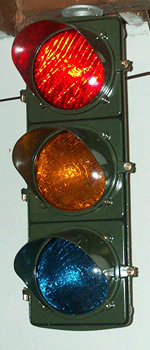
Here is the ID tag and logo on the back.
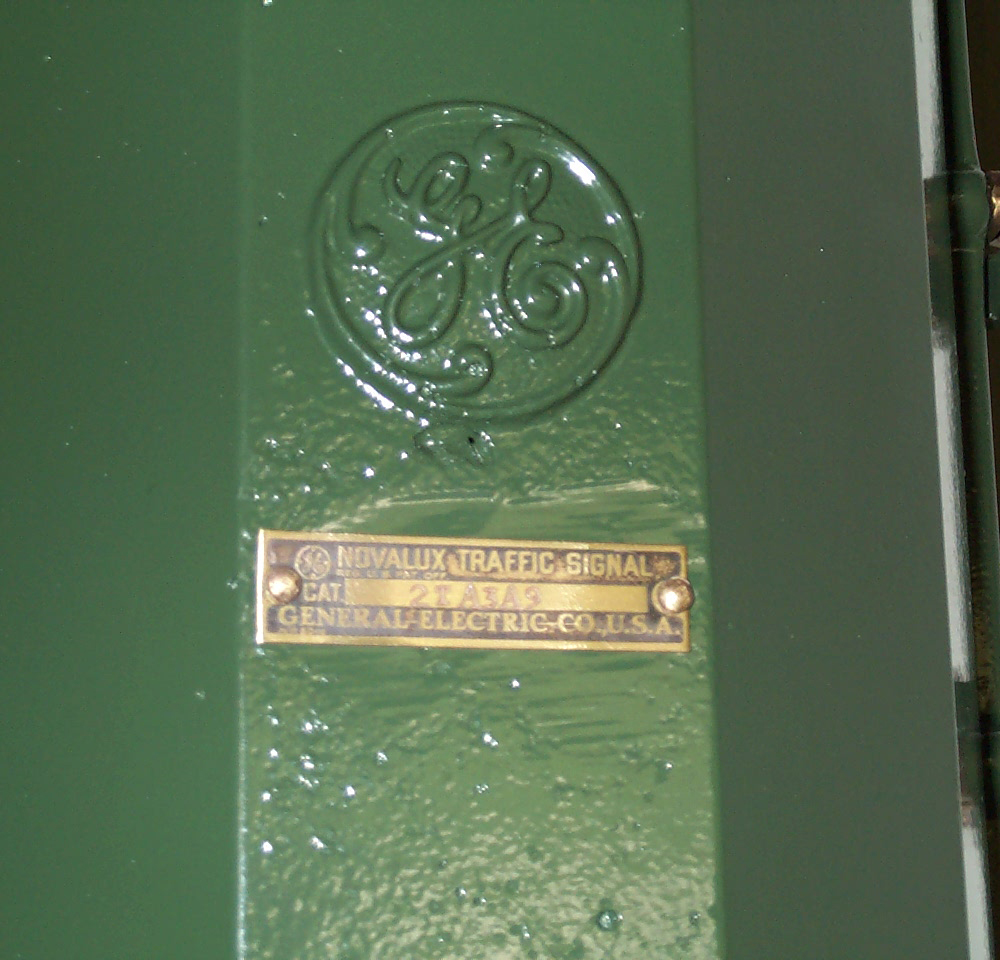
Here is another solid body signal.
At one time it was believed to have been made by GE because of
the reflectors it uses were also used in GE signals.
It is now believed to have
been a "home brew" signal made for the city of Milwaukee, Wisconsin.
It is unique in that it only has one
door. All three lenses are mounted in the one door.
This signal does not have an ID tag, so the model name is not known.
It is generally referred to as a Milwaukee signal by collectors.
This signal is very unique in that it only has one door for all 3 lenses! The
lenses are Kopp 27's
just like in the Ornamental Eaglelux and are original.
Thanks to the owner of this signal, Mike M. aka Fred, for use of the pictures!
Here is a picture of the "Milwaukee" signal that The Traffic Signal Museum owns.
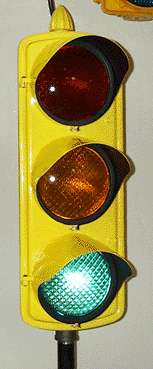
Crouse Hinds Port Hole
Here are 2 Crouse Hinds Port Hole solid body signals that were
recently removed from service in New Philadelphia, Ohio.
They are now stored in New Philly's traffic and sign shop. These signals have
port holes for doors.
These signals are rather plain compared to GE and Eaglelux signals.
Thanks to John C. aka Magnetboy for the pictures!
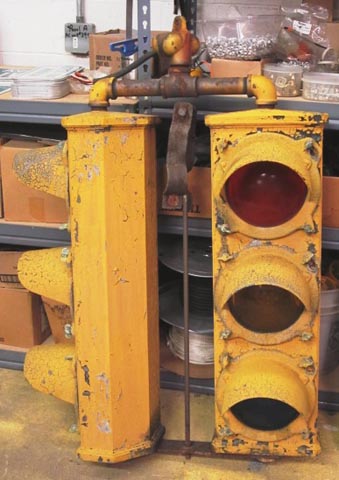
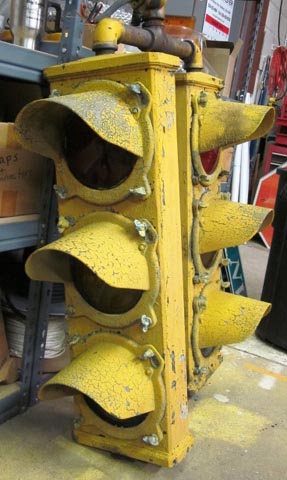
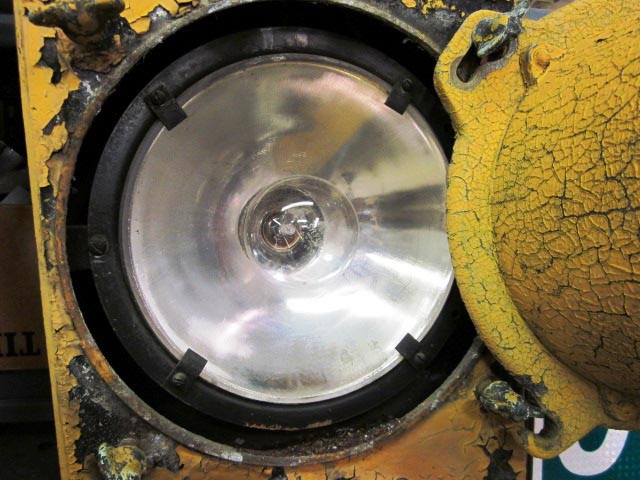
Here is a Tokhiem solid body signal that appeared on eBay.
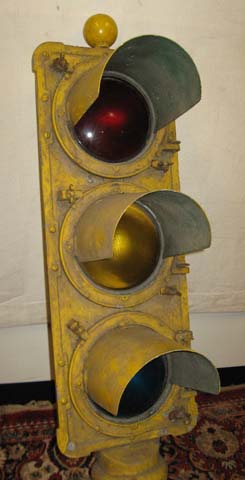
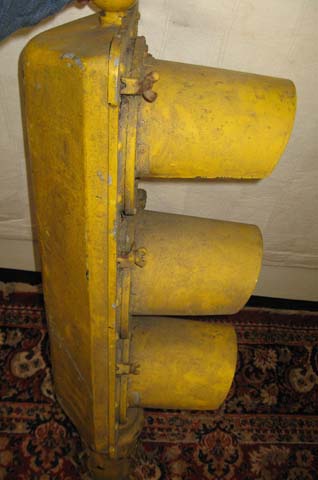
Here is a Harrington Seaberg solid body signal that appeared on eBay.
